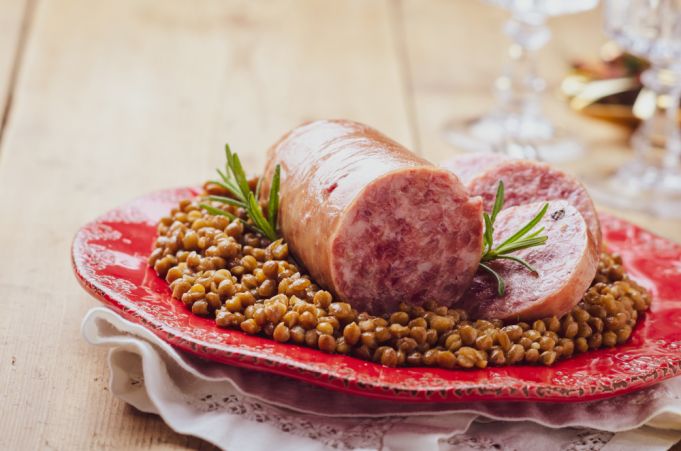All you need to know about the happy new year celebrations in Italy.
On the 31st of December, the entire world celebrates the last night of the year, which in Italy is also known as the “Notte di San Silvestro”. This is the most awaited night of the year bearing good intentions, dinners with family and friends, and the celebration of the new dawn.In Italy, this night is filled with traditions and rituals, consisting of mainly food, card games and spending time with loved ones. Let’s explore the history and activities of this special day deeply connected to the Italian culture.The name of this night is dedicated to Sylvester I, a saint who was pope during the Roman imperial period of Constantine and that played an important role in revising the calendar and the days of the week. He died on December 31st, in the year 335, which at the time was not yet recognized as the last day of the year.
In fact, until the 1700s, each region in Italy celebrated the New Year on a different date: in Venice on March 1st; in Tuscany on March 25th; in the South and in the islands on September 1st. It was later decided to make it coincide with the date of Jesus' circumcision, and since the Jews were subjected to this rite eight days after birth, it was designated to be on January 1st. However, on this special day the rituals and traditions are not necessarily linked to religious origins.In Italy, the food as well as socializing with family and friends are at the centre of this special night. The dinner organized for the last night of the year is called “Cenone di Capodanno” and it consists of traditional Italian dishes that have the purpose of wishing luck and prosperity for the year to come. Here is what most Italians traditionally eat during the night of Saint Sylvester.
The typical Roman cuisine starts from the classic Italian appetizers’ platters to the timeless spaghetti with clams or the typical tagliatelle with ragù. The second courses often include baked fish, cotechino (an Italian pork dish), breaded ribs, vegetable garnish, as well as the classic fried food such as fried cod, Roman broccoli, zucchini flowers and many more. The traditional desserts are gingerbread, pangiallo (a Roman cake), the beloved ice cream and other sweets ranging from chocolates to candies.There are also foods that are purely eaten for superstition purposes, as they are believed to bring abundance and good omen for the new year. In fact, there cannot be a “Cenone di Capodanno” without the presence of lentils on the table, which many traditionally prefer to consume after the midnight toast, with or without cotechino or zampone (pig’s trotter).
The lentils are considered the money bearers, as they resemble many small coins as well as gold. A famous Italian saying goes “Chi mangia lenticchie a Capodanno conta quattrini per tutto l’anno”, which translates to “Whoever eats lentils on New Year’s Eve will count money all year long”.
The eating isn’t over until the end of the party, as Italians continue snacking on panettone, pandoro, torrone or dry fruits while sitting at the table with family and friends, playing classic Italian card games.The most famous game is Tombola, a board game consisting of the random drawing of numbers from 1 to 90, which the participants mark gradually in the folder in their possessions on which 15 numbers are arranged on 3 rows, until they obtain various combinations or fill the entire folder. Other popular games are Mercante in Fiera, Sette e mezzo, Salta Cavallo or Scopa.
There are a few more Italian traditions that characterize this special night. A custom which is not practiced anymore for obvious safety reasons was to throw old objects outside of the window to leave the past behind and open to a better future. Another custom is to wear red underwear, which is a tradition dating back to the ancient Romans as red has always been considered a symbol of strength and bearer of good wishes.Lastly, Italians celebrate the new year with a kiss under the mistletoe given to their partners, to then cheer with the whole family and friends while holding a glass of prosecco. They all scream together what in English would sound like “Happy New Year!”, but that in Italian is “Buon Anno!”.
It is at this time of the night that the sky is filled with fireworks that have the purpose of illuminating the dark night and historically chase away evil spirits and demons. The light shines upon the new year while many people start putting in place their new year’s resolutions, a way of improving themselves and enjoy a fresh new start. New Year’s Eve is almost upon us, and for those who are preparing to celebrate the new year, it is already time to think about what to bring to the table.

















